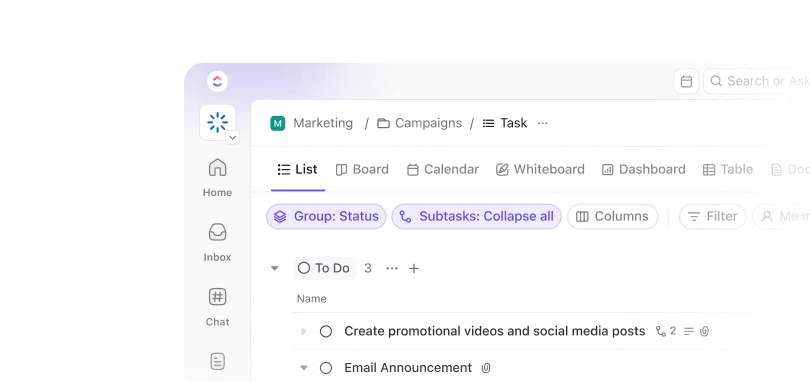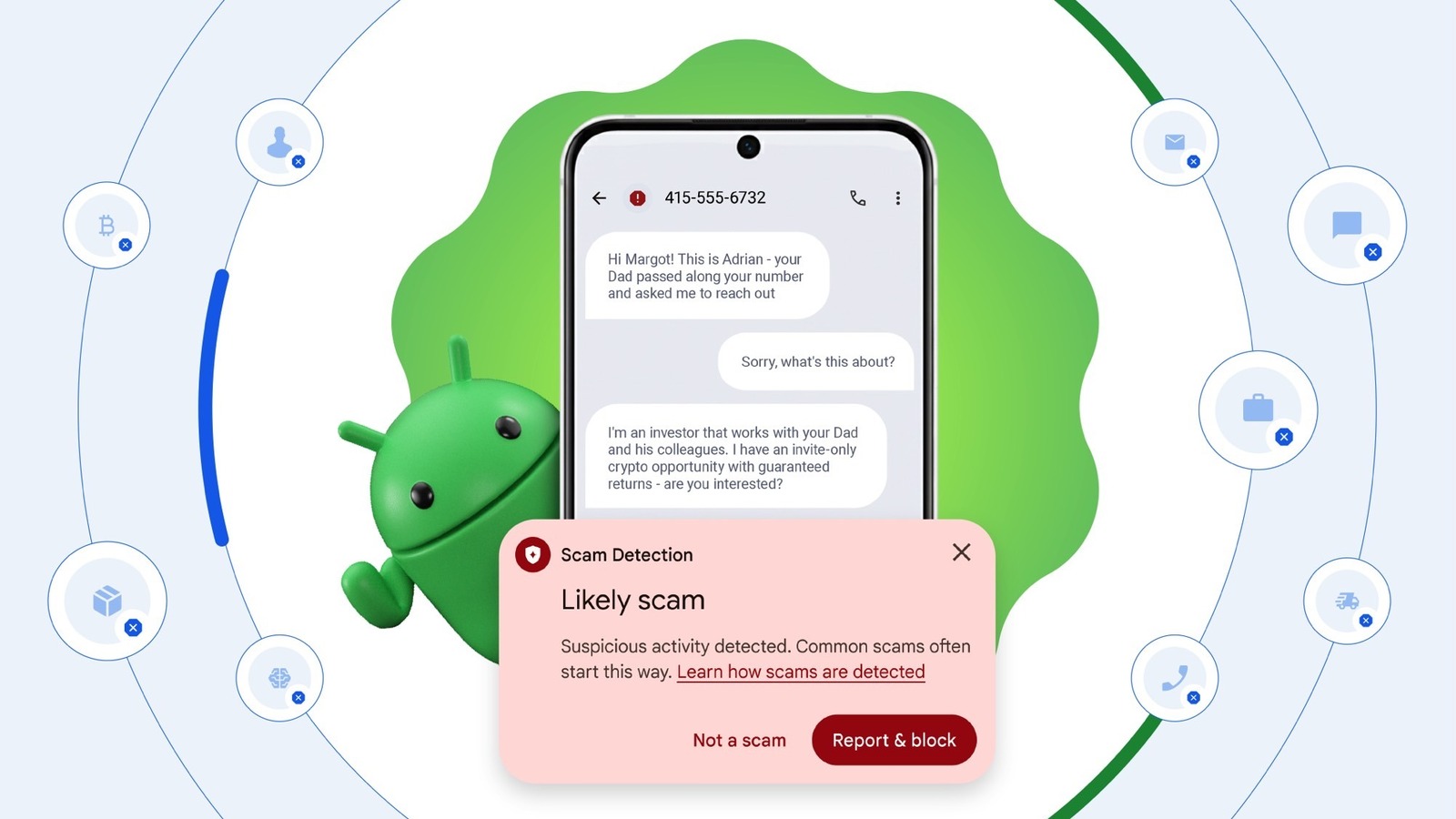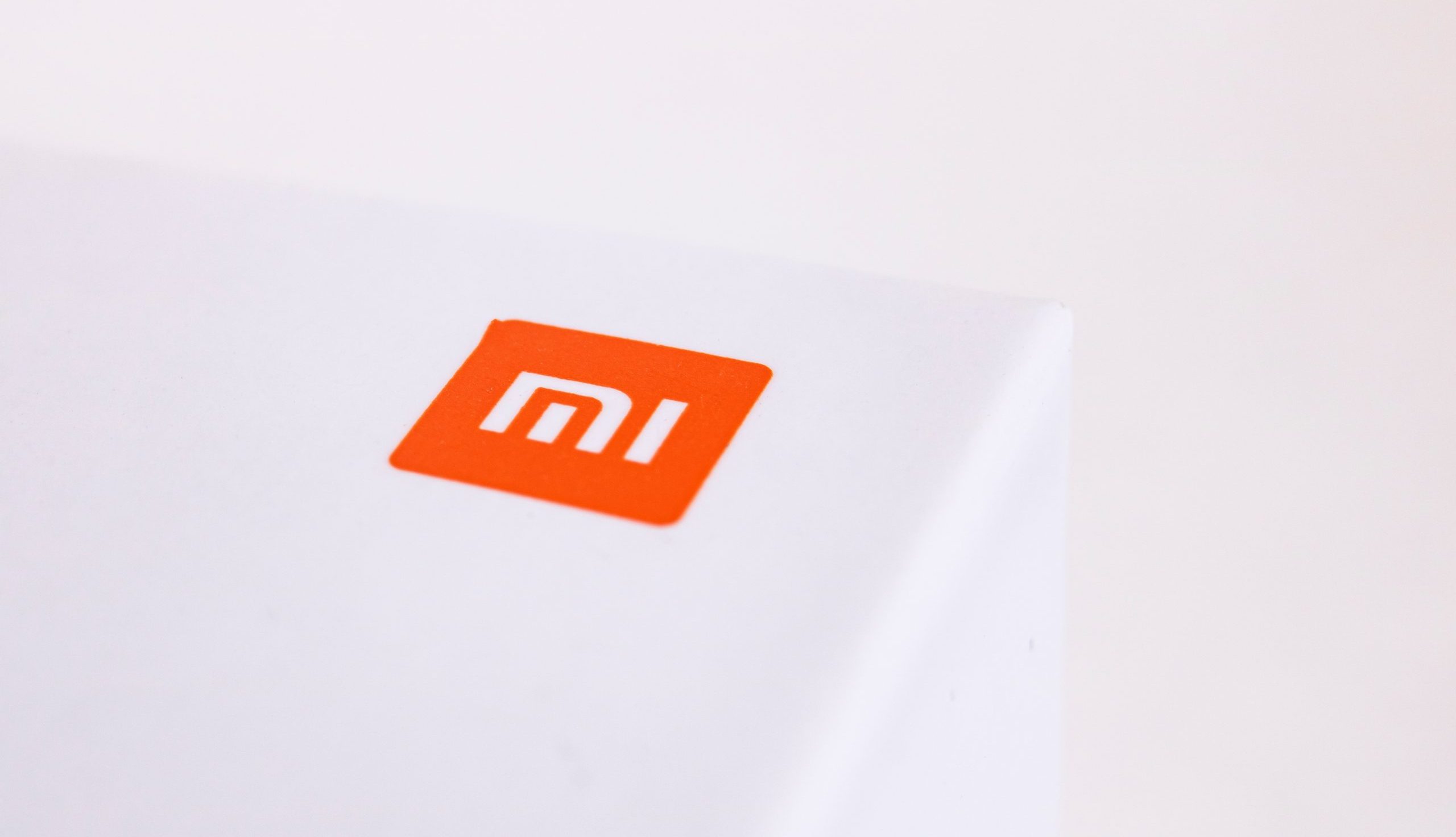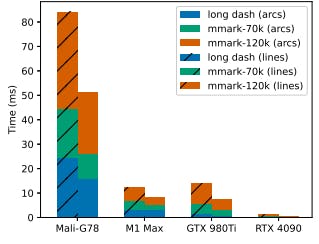Central Perk in Friends wasn’t known for world-class coffee or five-star service.
People loved it because it felt like their place. That loyalty kept the gang coming back day after day, and that’s exactly what every restaurant wants—customers who choose you again and again, not just for the food but for the connection.
Loyalty like that doesn’t grow overnight. It comes from creating experiences that stick, showing customers you know them, and finding ways to keep the relationship alive long after the first visit.
In this blog post, we’ll look at the best marketing strategies for restaurants to build that kind of bond and turn casual diners into regulars. 🧑🏼🍳
And as a bonus, we’ll see how , the everything app for work, helps!
Marketing Strategies for Restaurants: How to Increase Customer Loyalty
⭐ Featured Template
Struggling to get more diners through the door?
’s Local Restaurant Marketing Plan makes organizing campaigns, scheduling social posts, and running local promotions simple. Track what works, refine your strategy, and turn marketing efforts into steady customer growth.
Why Marketing Matters for Restaurants
Restaurants live and die on attention.
A packed dining room today doesn’t guarantee the same crowd tomorrow in the incredibly competitive culinary industry. Marketing keeps your establishment visible, builds a distinct brand identity, and transforms one-time diners into a loyal customer base.
Ultimately, this ongoing relationship with customers is what drives consistent revenue.
🧠 Fun Fact: Restaurants have long used the power of scarcity to boost sales. Limited-time offers, like McDonald’s seasonal McRib, create urgency, making people rush in before the item disappears.
10 Top Marketing Strategies for Restaurants
These marketing strategies for restaurants help your business stand out and grow. 📈
1. Build authentic connections with social media storytelling
Your food photos might look beautiful, but they blend with every other restaurant’s content on social media. Storytelling content differs because it shows the people and passion behind your dishes.
When your audience sees your prep cook perfecting their knife skills or your pastry chef decorating a birthday cake at 6 a.m., they connect with the person behind their meal.
These authentic moments create something powerful that price-focused competitors can’t replicate. Stories build emotional bridges that turn casual diners into devoted advocates who recommend you to friends without hesitation.
How to execute this strategy with precision
- Set up filming sessions during prep times when energy levels naturally peak and kitchen lighting creates dramatic shadows
- Develop a signature filming style using three-shot sequences: ingredient prep, cooking action, and the customer’s first reaction
- Layer trending regional audio tracks over footage while adding captions that reflect your restaurant’s unique voice and local humor
- Schedule posts strategically during lunch decision-making hours (11 a.m.-1 p.m.) and dinner planning windows (5-7 p.m.)
- Analyze engagement patterns and marketing productivity metrics to identify which stories and themes naturally draw audiences
📌 Example: A local pizzeria’s simple 30-second clips showing dough being spun to perfection, set to upbeat music with captions like ‘Fresh dough, fresh vibes!’ consistently generate thousands of views and drive noticeable foot traffic during lunch hours.
Even better, customers now specifically request to watch the dough-tossing process in person. This turns what was once hidden kitchen work into dinner entertainment that competitors can’t copy.
⚡️ Template Archive: Try the Social Media Content Calendar Template to plan your shoots, lock in posting times, and track which stories spark the most engagement. With everything mapped out, you can keep your content flowing smoothly while giving each team member their moment in the spotlight.
2. Nurture long-term relationships with email marketing campaigns
Unlike social media’s unreliable algorithms, email is a direct line to your customers—like a weekly coffee chat with your most loyal patrons.
This intimate communication channel is an essential element of your marketing strategy. It allows you to share exclusive stories, seasonal insights, and special access that make subscribers feel like insiders.
Treat your email list as a community, not a sales funnel. Make subscribers feel like insiders by consistently sharing value through exclusive stories, chef tips, and behind-the-scenes content. This builds a genuine connection that translates into more visits.
How to execute this strategy with precision
- Install tablet-based signup systems at your host stand, offering exclusive digital cookbooks featuring simplified versions of your signature dishes
- Craft a three-part welcome sequence that delivers the promised cookbook, shares your founding story, and provides a time-limited visit incentive
- Segment your repeat customers based on POS data, including dietary preferences, visit frequency, and favorite menu categories for targeted messaging
- Send newsletters bi-weekly, midweek, when people start planning their weekend dining adventures
- Track which content generates the highest reservation rates within 48 hours, and double down on winning formats
- Program automated birthday and anniversary campaigns that acknowledge important customer milestones
📌 Example: A farm-to-table restaurant can transform its email marketing calendar by focusing on education rather than promotion. Their monthly newsletters highlight seasonal ingredients and feature interviews with local farmers, complete with simple recipes customers can recreate at home.
This approach has created an engaged community where subscribers regularly reply with cooking questions and menu suggestions. The restaurant now uses these conversations to guide its seasonal menu development, creating dishes that it knows its audience wants.
⚡️ Template Archive: Set up the Email Marketing Template to segment your audience, schedule sends on high-traffic days, and track performance against reservation data.
3. Expand your reach organically through local community partnerships
Community partnerships connect you with people who already trust your partner organization. This trust transfer is valuable because it increases the likelihood that potential customers will try your restaurant.
Consider how a yoga studio’s post-workout crowd naturally craves healthy smoothies, or how bookstore browsers appreciate having a cozy coffee spot nearby. These natural alignments create win-win scenarios that benefit everyone involved while building community connections.
How to execute this strategy with precision
- Map other local businesses within walking distance that serve your ideal customers but don’t compete with your offerings
- Create co-branded materials that can be displayed prominently in both locations without looking like advertisements
- Establish monthly review meetings using concrete metrics like unique discount code usage and new customer surveys from your restaurant scheduling tool
- Design seasonal campaigns that align with both businesses’ peak periods and customer needs
- Maintain detailed partnership records, tracking which collaborations generate the highest customer acquisition and retention rates
📌 Example: A breakfast cafe noticed that the nearby yoga studio’s classes ended right when they opened each morning.
The cafe owner approached the yoga instructor with a specific proposal: post-class smoothie discounts for yoga students in exchange for promoting the cafe’s healthy catering options for studio workshops.
This partnership has generated dozens of new regular customers who now extend their wellness routines from the yoga mat to the breakfast table. Additionally, they co-host monthly ‘Mindful Eating’ workshops that sell out consistently, positioning both businesses as wellness leaders in their neighborhood.
💡 Pro Tip: Turn community partnerships into clear, trackable wins with Goals. Set a goal like ‘New Customers from Local Partners’ and connect it to tasks such as creating co-branded materials, scheduling seasonal campaigns, and monitoring discount code usage.
4. Leverage social proof with user-generated content campaigns
Professional food photographs might look flawless, but can feel sterile and disconnected from the actual dining experience. In contrast, genuine customer photos capture the excitement and authentic joy of discovering a great meal.
People trust these real moments far more than polished branded content, which makes user-generated content your most credible marketing asset.
Give people compelling reasons to share their experiences and meaningful recognition when they do. When executed thoughtfully, these campaigns create community excitement and attract new customers who want to join the fun.
How to execute this strategy with precision
- Launch monthly themed campaigns tied to seasonal specials, local events, or signature dishes that photograph well
- Create entry requirements that ensure quality content: include dish names, descriptive taste words, and friend tags
- Build dedicated Instagram Story highlights, organizing submissions by menu category for easy browsing by potential customers
- Respond personally to each submission, referencing specific details from their post rather than generic thank-you messages
- Monitor engagement metrics beyond surface-level likes, focusing on saves, shares, and profile visits following featured content
📌 Example: A burger joint created the #BurgerFaceChallenge, encouraging customers to capture their genuine reactions to the first bite of their signature burger.
Winners receive a month of free meals, which motivates high-quality participation. The campaign has generated hundreds of authentic posts showing people’s surprise and delight at the burger’s size and flavor.
The restaurant features winning submissions daily on its social channels, creating a cycle in which participants feel celebrated and their friends want to experience the same excitement.
🔍 Did You Know? The concept of a modern restaurant began in Paris in the 18th Century, where establishments started offering a menu of dishes to be consumed on the premises. This shift from inns and taverns marked the birth of the restaurant industry.
5. Reward genuine customer relationships through loyalty programs
Instead of creating complex loyalty programs that feel like homework, focus on simple appreciation. While confusing points and tiers frustrate customers, genuine recognition builds an emotional connection.
The real magic is in the personal touches—remembering preferences and celebrating special occasions. This makes customers feel truly valued, creating lasting loyalty that competitors can’t easily replicate.
How to execute this strategy with precision
- Implement dual-track systems combining simple physical punch cards with optional digital apps for customers wanting additional features
- Configure your food management software to flag essential customer details like birthdays, dietary restrictions, and anniversary dates
- Structure rewards across three meaningful categories: food perks, experience upgrades, and convenience benefits that customers actually value
- Survey program members quarterly using brief, focused questions about their favorite rewards and desired additions
- Compare spending patterns and visit frequency between members and non-members to calculate true program ROI
- Create surprise recognition moments for your most frequent visitors through handwritten notes and exclusive event invitations
📌 Example: A coffee shop kept its loyalty program simple: buy nine coffees, get the 10th free. However, they elevated the experience by offering bonus punches for trying new menu items, which increased average orders while introducing customers to different products.
What truly sets them apart is their personal attention—they remember regular customers’ names and usual orders and even ask about family members mentioned in previous conversations.
⚡️ Template Archive: Build a loyalty system that actually excites people with the CRM Template for Restaurant Owners. Map out food perks, experience upgrades, and convenience benefits in one place, then track which rewards keep guests coming back.
6. Capture searchers at the right moment with local SEO
When someone searches ‘restaurants near me,’ they’re at the perfect moment in the customer journey—hungry, ready to spend money, and looking for immediate solutions.
Local search engine optimization (SEO) ensures you appear in these high-intent searches when potential customers are actively making dining decisions.
To dominate these searches, provide the comprehensive, helpful information that Google rewards. Over time, this consistent effort builds digital authority that leaves competitors behind.
How to execute this strategy with precision
- Conduct weekly Google My Business audits, updating hours, adding photos, and posting about upcoming specials
- Develop location-specific website pages for surrounding neighborhoods featuring parking tips, walking directions, and local landmarks
- Set up Google Alerts monitoring your restaurant name, neighborhood dining discussions, and signature dish mentions for immediate response opportunities
- Encourage positive Google reviews during peak satisfaction moments when customers are genuinely excited about their experience
- Track monthly search performance for key local terms using Google Search Console to identify ranking improvements and opportunities
📌 Example: A Thai restaurant owner decided to personally respond to every Google review, whether positive or constructive criticism. They post fresh photos of weekly specials and diligently update holiday hours and special events. These consistent efforts moved them from page three to the top three results for ‘Thai food [city name].’
Surprisingly, they discovered that thoughtful responses to negative reviews often converted unhappy customers into loyal advocates. This is because they appreciated the owner’s genuine commitment to improvement and customer satisfaction.
💡 Pro Tip: Use Recurring Tasks to automate your local SEO routines. Set them to repeat every week for Google Business profile updates, photo uploads, and review responses, and add monthly cycles for monitoring search rankings.
With these tasks on autopilot, your restaurant’s Google ads will always remain visible and competitive.


7. Create urgency and excitement through seasonal menu promotions
While limited-time offers are powerful, avoid manufactured urgency, which can feel manipulative and damage trust. Instead, run authentic seasonal promotions, connecting special offers to real seasons and cultural moments.
When done well, these promotions generate media attention, social media buzz, and customer excitement that extends far beyond the promotional period itself.
How to execute this strategy with precision
- Plan seasonal menus four months in advance to secure premium ingredients and negotiate favorable pricing before peak demand
- Craft compelling backstories connecting each limited dish to local farming cycles, cultural traditions, or historical significance
- Deploy countdown marketing across all channels, emphasizing specific end dates and ingredient availability
- Price seasonal items at premium levels reflecting their special nature and higher-quality ingredients
- Document comprehensive performance data, including sales figures, customer feedback loops, and social media engagement, for future optimization
📌 Example: Every October, a steakhouse launches its ‘Harvest Season Specials’ featuring dishes made with locally sourced fall vegetables like butternut squash, Brussels sprouts, and root vegetables. They promote these items as ‘available only until November 30th,’ creating genuine urgency tied to actual harvest seasons.
The menu descriptions educate customers about specific local farms and seasonal growing practices, justifying premium pricing while building community connections.
They also partner with featured farms for Instagram takeovers, showing harvest activities and creating content reinforcing the seasonal connection.
🚀 Advantage: Let Calendar schedule your seasonal menu tasks automatically. Set your launch date, and it will block prep, ingredient orders, and marketing deadlines so your limited-time dishes hit the table right on time.
For a summer berry menu, the AI can auto-schedule menu finalization, berry sourcing, and social posts, keeping your team on track without manual planning.
8. Engage local audiences with influencer collaborations
Local food enthusiasts with small but engaged followings can drive significant business because their audiences know them personally and live nearby.
The key is to identify micro-influencers who genuinely align with your brand values and have authentic relationships with their local community.
How to execute this strategy with precision
- Research potential collaborators by analyzing their engagement rates, ensuring audience interaction exceeds 3% for an authentic community connection
- Develop comprehensive collaboration packages, including behind-the-scenes access, ingredient sourcing stories, and exclusive menu previews
- Provide key messaging guidelines while explicitly encouraging personal interpretation and authentic voice expression
- Establish tracking systems using unique discount codes and custom links to monitor traffic generation and marketing KPIs
- Focus exclusively on influencers within 20 miles since restaurant visits require physical proximity and local credibility
📌 Example: A sushi restaurant began inviting local food bloggers for exclusive omakase experiences, asking only for honest online reviews in return.
Three carefully chosen bloggers shared detailed posts about their evening, highlighting the chef’s technique, ingredient sourcing, and overall atmosphere. The authentic enthusiasm in their content generated hundreds of new social media followers and a noticeable increase in reservations the following month.
⚡️ Template Archive: Manage your influencer partnerships with the Campaign Tracking Template by logging every collaboration, assigning deadlines, and tracking performance data side-by-side.
9. Host events that transform dining into experiences
Regular dinner service generates predictable revenue, but special events create premium-priced experiences that customers can’t replicate at home or elsewhere.
These occasions position your restaurant as a cultural destination.
Successful restaurant events leverage your existing space, equipment, and expertise to deliver exceptional value that justifies higher pricing. Additionally, they provide excellent social media content and create deeper connections with customers who experience your restaurant in new, engaging ways.
How to execute this strategy with precision
- Choose event concepts that highlight your team’s existing strengths while utilizing current ingredients and equipment to minimize additional costs
- Calculate pricing using a precise formula: total costs multiplied by three, plus experiential premium reflecting the unique value provided
- Market events through targeted channels, prioritizing your most engaged email subscribers and social media followers first
- Implement streamlined reservation systems, capturing essential details like dietary restrictions and contact information for future marketing
- Follow up with participants within 48 hours using brief surveys about favorite moments and suggestions for future events
📌 Example: An Italian restaurant launched monthly ‘Pasta Making 101’ classes where participants learn traditional techniques before enjoying a three-course meal featuring their handmade pasta. These sessions consistently sell out at premium pricing and frequently lead to future dinner reservations.
Many participants book private pasta-making parties for birthdays and anniversaries, creating an additional revenue stream requiring minimal overhead. The restaurant photographs each class for ongoing social media content and has developed a waiting list of over 200 people eager to participate in future sessions.
⚡️ Template Archive: Run your special dinners and tasting events with the Event Planning Template. Use List View to map every stage of prep—menu design, vendor coordination, staff assignments—while Calendar view keeps timelines tight from concept to event night.
10. Activate word-of-mouth marketing with the help of referrals
Personal recommendations drive more restaurant visits than any traditional marketing channel, yet most establishments rely on hope rather than systems to generate these valuable endorsements.
A strategic referral program empowers satisfied customers to become your best promoters. The result is a win for everyone: the referrer feels valued, the new guest receives a trusted recommendation, and you gain another loyal patron.
How to execute this strategy with precision
- Structure rewards as meaningful restaurant credits rather than percentage discounts to emphasize value while encouraging return visits
- Time promotional pushes during peak satisfaction periods, when customers naturally want to share positive experiences
- Provide multiple sharing mechanisms, including physical referral cards, digital codes, and QR scanning options, for different preferences
- Recognize your most active advocates with VIP treatment, such as priority seating, exclusive menu previews, and special event invitations
📌 Example: A Mexican restaurant created a straightforward referral program offering existing customers substantial restaurant credits for each successful referral, while new customers receive welcome discounts on their first visit.
They track referrals through a simple app that lets customers send digital gift cards directly to friends, making the sharing process effortless and trackable.
Through this program, they generate dozens of new customers monthly and discovered that referred customers demonstrate significantly higher lifetime value than those acquired through other marketing channels.
💡 Pro Tip: Document and refine your marketing playbook in Docs. You can store reward details, templates, and updates in one doc so your team always works from the same playbook. Link it to tasks for easy execution and quick adjustments based on customer feedback.


How Supports Restaurant Marketing Efforts
Running marketing for a restaurant feels a lot like running the kitchen. Ideas come fast, timing matters, and the whole thing falls apart if one step gets missed.
The creative side is fun, but the operational side can feel endless.
for Marketing Teams gives restaurant marketers a way to stay organized, capture ideas quickly, and move campaigns forward without wasting time. Here’s how the enterprise marketing software keeps marketing strategies for restaurants on track. 🍴
Bring past campaigns back to the table
Every big promotion starts with the same question: What worked last year? Did the Valentine’s prix fixe menu sell out because of the Instagram ads, or did the email campaign bring diners in?
Hunting through old emails and files to piece it together takes hours.


Brain makes that process effortless. Since it connects across your workspace, you can simply ask for what you need and have it appear in seconds.
📌 Try this prompt: Pull the copy we used for last year’s Valentine’s Day email campaign, along with the customer feedback we logged and the final flyer design.
Instead of spending an afternoon chasing old documents, you start from proven material and refine it. Your team can get creative immediately because the context is already in place.
🧠 Fun Fact: From the 1930s to the 1950s, restaurants commonly used matchbooks as advertising. These colorful matchbooks featured the restaurant’s name and logo, serving as both a functional item and a marketing tool.
Log new ideas before they disappear
Some of the best marketing sparks happen outside a desk. A chef might pitch a seasonal appetizer while prepping for dinner service. A manager might suggest a trivia night special while cashing out. If those ideas don’t get captured immediately, they vanish in the rush.


Brain MAX solves that. It works as a desktop companion where you can quickly speak and save ideas as real tasks.
You could say, ‘Create a task to promote Margarita Monday, assign it to design and social, and set it for next Thursday.’ Brain MAX turns your dictation into text instructions that create a task instantly with a due date and clear owners.
Brain MAX also gives you control over which AI model to use for different jobs.
For playful copywriting, you might switch to ChatGPT. For building a marketing calendar, Gemini can give you structure. Claude works best to tighten the tone of your website updates. You’re not locked into one AI assistant; you choose the right one for the job.


This helps the team:
- Capture spontaneous ideas without extra typing
- Keep campaign planning flowing during busy hours
- Use the right AI model for different types of tasks
Automate the handoffs that slow campaigns down
Restaurant campaigns often get stuck at the handoff stage. A July 4th BBQ promo flyer might be ready, but the campaign stalls if no one knows it is waiting for approval. Managers spend more time chasing updates than planning the next promotion.


Automations keep things moving. You can set rules so the system handles those handoffs for you. For example:
- Once the designer uploads the flyer, the GM gets tagged immediately for approval
- After the GM approves, the social media task is automatically created and assigned
- Two days before the event, a reminder goes to the FOH staff to set up flyers and post on the restaurant’s Facebook page
The campaign flows from one stage to the next without someone having to push it forward constantly.
📮 Insight: According to our survey, nearly 88% of leaders still rely on manual check-ins, dashboards, or meetings to get updates.
The cost? Lost time, context-switching, and often, outdated information. The more energy you spend chasing updates, the less you have for acting on them.
’s Autopilot Agents, available in Lists and Chats, surface status changes and critical discussion threads instantly. Here’s to never having to ask your team to send “quick updates”. 👀
💫 Real Results: Pigment improved team communication efficiency by 20% with —keeping teams better connected and aligned.
Turn unclear requests into actionable campaigns
Every marketing team has heard it: ‘We should promote the new burger.’
The idea is fine, but without details, it’s unusable. What’s the budget? Which channel? When should it go live? Clarifying those points turns into endless back-and-forth.


You can set up a simple Form in for staff to submit their requests. They fill in the basics—campaign type, budget, dates, and assets needed. The Form automatically creates a task in your workspace, complete with deadlines and owners.
Ready to fill your restaurant with happy guests? Unlock the secrets to high-impact campaigns with The Campaign Execution Playbook. This essential guide breaks down every step of restaurant marketing, from building buzz for special events to using AI for digital marketing.


Discover actionable growth marketing strategies, expert tips, and ready-to-use templates designed to help your team fill seats, boost revenue, and create memorable dining experiences.
See every campaign in one place
Restaurant marketing rarely happens one campaign at a time. A fall catering push might overlap with happy hour promos and a Halloween event. Without a clear view, it’s easy to overload the team or miss deadlines.


Dashboards bring all of it into a single snapshot. You can see:
- Which campaigns are waiting for approvals
- Who has too much on their plate this week
- How many design tasks are stuck in review
- Which campaigns are on schedule and which are falling behind
For example, you might notice that your designer is overloaded since you’ve requested Labor Day and brunch marketing materials simultaneously. That visibility lets you adjust priorities before deadlines are missed.
🔍 Did You Know? In 1997, Pizza Hut cast Mikhail Gorbachev in an ad where Russians argued about his legacy—freedom vs. chaos—before agreeing on one thing: ‘Because of him, we have Pizza Hut.’ Gorbachev never speaks, but his silent cameo turned a pizza commercial into global political theater, making it one of the most unforgettable restaurant ads ever.
Start smarter with a ready-to-go marketing plan
Building a campaign marketing plan from scratch can take longer than the actual campaign. You have to create tasks for email, social, events, and print before the creative work even begins.
’s Local Restaurant Marketing Plan Template saves that effort. It comes pre-loaded with workflows for common campaigns like holiday promos, loyalty pushes, or event nights.
The marketing campaign template gives you five different views—Key Results, Timeline, Getting Started Guide, Objectives, and Progress Board—to help you gain insights and streamline marketing efforts.
Hear it from our marketing team on using :
🧠 Fun Fact: In the late 1800s and early 1900s, restaurants experimented with novelty architecture—structures shaped like shells, animals, and even giant food items—to grab motorists’ attention. One famous example is the Brown Derby restaurant in Hollywood, built to look like a derby hat. It was ‘eatertainment’ before the term existed.
Serve Up Success With
Running restaurant marketing can feel like a nonstop rush. You have specials to promote, social posts to schedule, menus to update, and events to push out, all at the same time. One missed step and the whole campaign falls behind.
keeps everything moving seamlessly.
Brain and Brain MAX instantly turn off-the-cuff ideas into polished copy and clear tasks. Forms ensure creative requests land exactly where they need to, avoiding confusion or delays.
Automations push tasks forward automatically, and Dashboards clearly show which promotions are winning attention and which need a boost.
Get your marketing running as smoothly as your kitchen. Sign up for today! ✅
Frequently Asked Questions (FAQs)
A. The best marketing strategies for restaurants include optimizing for local searches (local SEO), engaging customers on social media, running email marketing campaigns, creating loyalty programs, offering seasonal or limited-time menu promotions, and building partnerships with local businesses to attract loyal customers and strengthen community ties.
A. Small restaurants can attract new customers by offering special promotions or limited-time deals, encouraging referrals and word-of-mouth marketing, partnering with nearby businesses for co-promotions, maintaining accurate online listings and reviews, and sharing authentic, engaging content on social media that highlights their unique offerings.
A. Effective digital marketing tactics for restaurants include keeping Google My Business updated, running targeted social media ads, sending newsletters and personalized emails, collaborating with local influencers, promoting reservations on online booking platforms, and sharing behind-the-scenes or storytelling content to create a connection with customers.
A. Restaurants use social media to showcase their menu items, share behind-the-scenes moments, highlight special events or offers, run contests or giveaways, engage with followers through comments and messages, and build a community of loyal customers who support and advocate for their brand.
A. Tools that help manage restaurant marketing campaigns include for planning and tracking tasks, social media scheduling tools like Buffer or , email marketing platforms like Mailchimp or Klaviyo, and CRM systems for managing loyalty programs and customer relationships.


Everything you need to stay organized and get work done.














